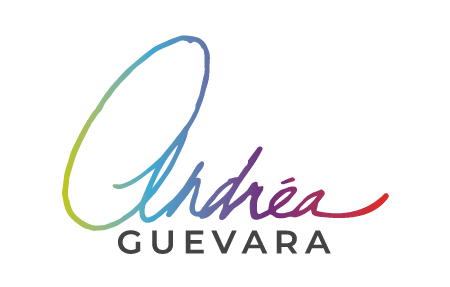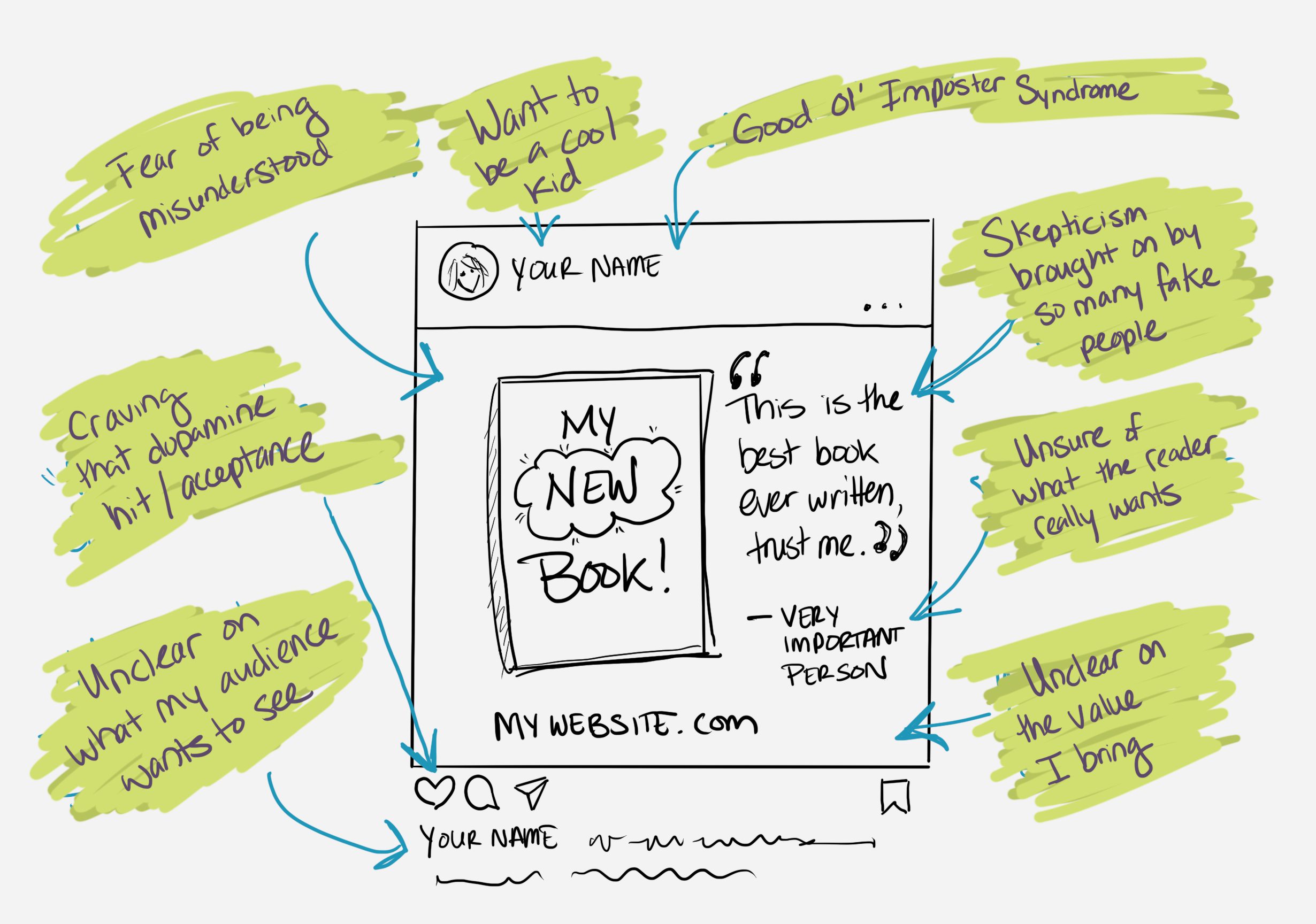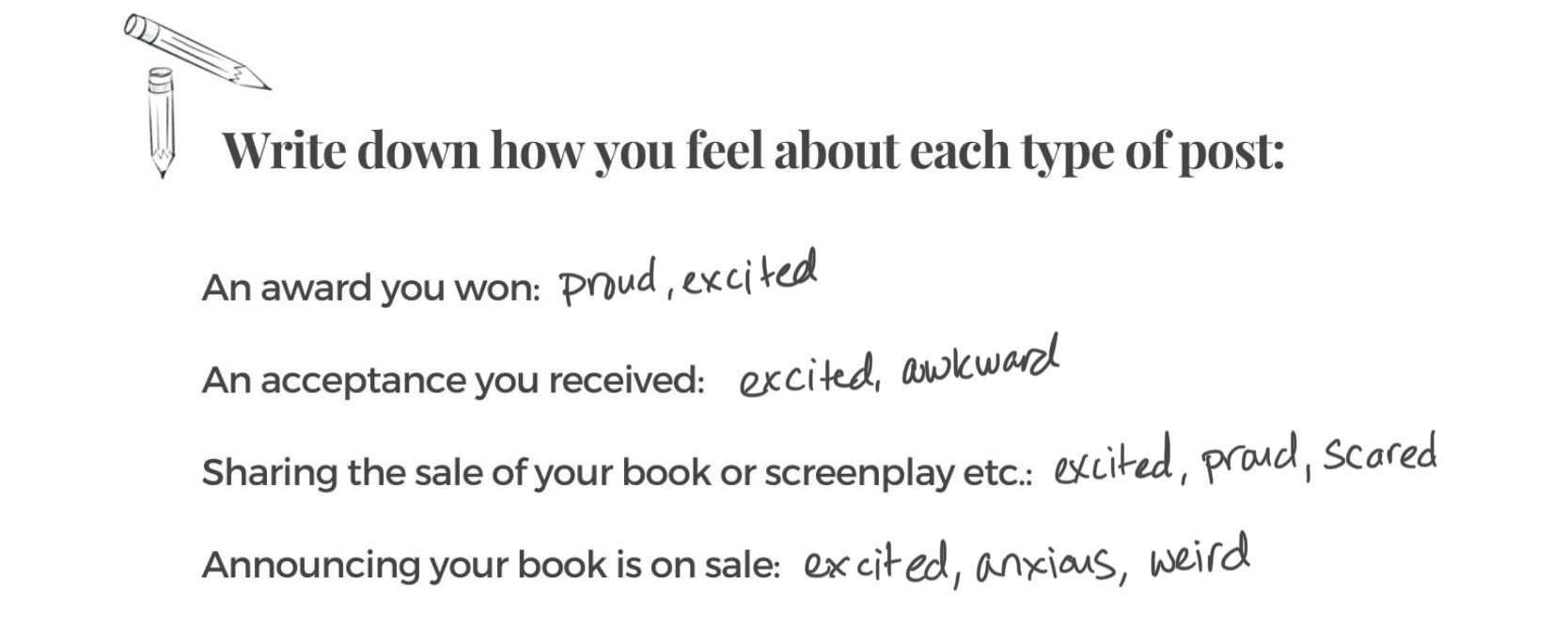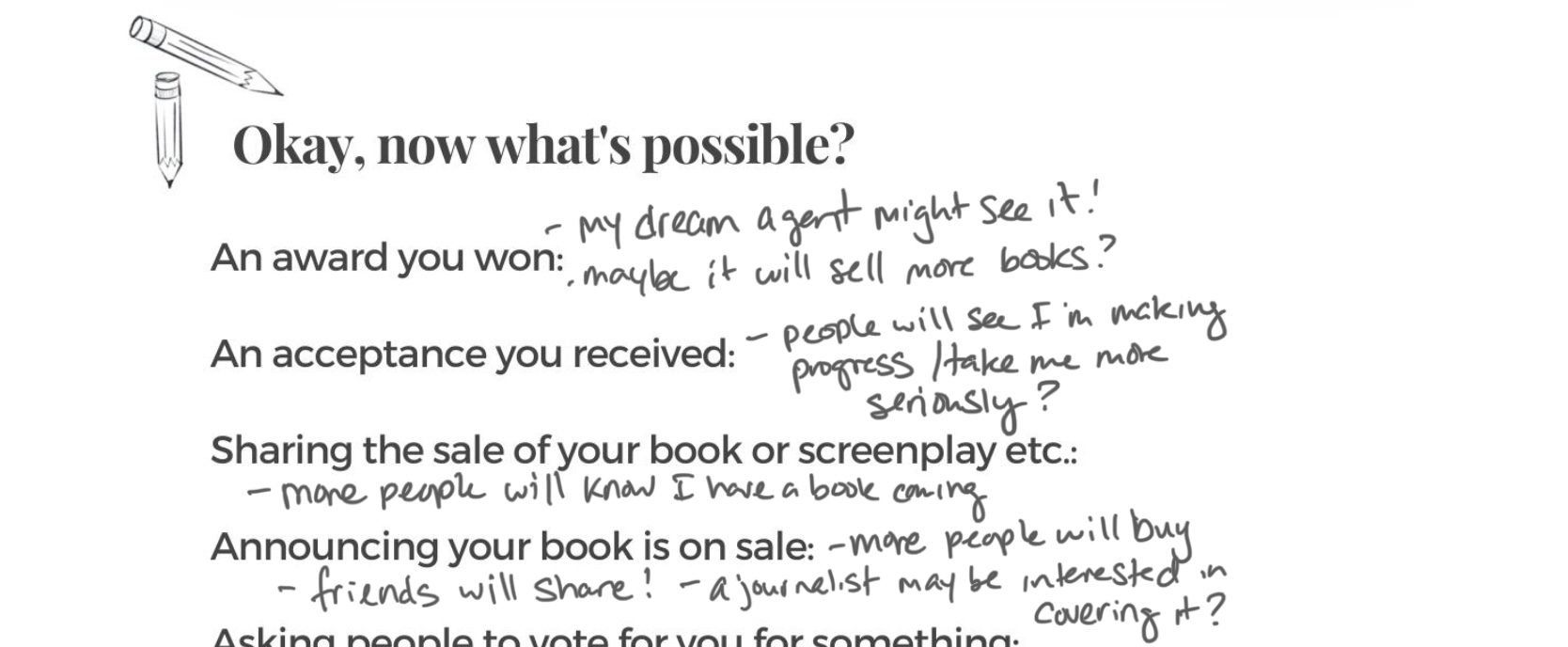Your website has the potential to show the world why they should pay attention to you and your writing, yet most authors and writers treat it more like business card, or skimpy brochure. The truth is, your website should be making you money, whether that is through direct sales of your books (and/or services), referrals, clients, or maybe helps you land an agent, editor, publisher, interview, or a even a book deal.
Your author website can be a dynamic 24/7 representative of your personal brand. Done right, it can help you change the trajectory of your career. Done poorly, it may actually look less professional or legit than you are! I am willing to bet that you, like me, would rather be in that first category. If you want to create something bigger and better for your author brand, then it’s time to take your website seriously. Take the time to do what most of your competition won’t: think it through and invest in it.
Let’s stop leaving money on the table and implement some ways that your website can be working better for you. I’ll walk you through some of the must-have features for your author website, based on my 20+ years of experience building websites.
#10: Communicate Clearly
The 3 Second Rule: Who You Are & Why They Should Care
Imagine you’re visiting your website for the very first time. (Also imagine you’re not “you” obvi.) Now, as you’re looking through it, ask yourself these questions, honestly:
-
-
- What does this person write?
- Who are they? What makes them special?
- Why should I care?
If you cannot answer those questions within the first 3-5 seconds of landing on your homepage, you have some work to do.
Your visitors are losing patience and interest. As a result, you’re losing money. Why make it so hard for people to understand your value?
Let go of the old idea that you need to “sell them” first. People are inundated by advertising and marketing all day long. The last thing they need is for you to advertise before they even know what you are selling. Now, I’m not saying you can’t use any marketing tools, just make it easy for your visitors to know what you do and who you are. If your head is too deep into your own work, ask 5 friends–preferably ones who may not yet buy your books or know what you write–to visit your site and tell you what the site is about. You may be surprised at their answers.
Here are a few quick fixes that can help communicate who you are and why they should care:
Make sure your name or logo is simple and communicates who you are and what you do.
This should be at the top of your website, on every page.
Use a succinct (max 7 words) tagline under your logo/name to help communicate what you do.
If for some reason you aren’t able to edit your own site to put the tagline directly under your name or logo, you could also add it as a headline. Just make sure it’s near the top so peole don’t have to scroll down to see.
Here are some examples of two types of taglines we’ve developed for our author branding clients:
Stephanie Land:
“Unflinching Writing About Poverty & Motherhood” (work-based) & “The New York Times bestselling author of MAID” (role-based)
Sarah Vogel:
“Fighting for the people, at the crossroads of agriculture, policy, and law.” (work-based) & “Advocate, Attorney, and Author of The Farmer’s Lawyer” (role-based)
Kari O’Driscoll:
“Driven by the exploration of human connection” (work-based) & “Author, Educator, & Founder of The SELF Project” (role-based)
Make it easier for visitors to find what they are looking for.
Make sure the titles (and corresponding link) of each of your web pages are short and to the point, and geared toward your audience. For instance, it’s much clearer to have a page link titled “Books” rather than “Work” in most cases.
#9 Ways to Engage with Visitors on Your Website
Now that your visitors know who you are and what you’re doing in 3 seconds or less, take another look at your site and think about these questions:
-
-
- How can people engage with you or your writing?
- What are your paths toward a sale, share, or contact?
- In what ways can visitors ask a question or find what they are looking for without having to?
If your answer is that they can only engage with your author brand in one way, perhaps by emailing you, you’re missing out on connecting with your readers and that is or will hurt your sales and brand long term.
I’ll never forget a worthwhile tip an internet marketer shared with me many years ago: people have different preferences when it comes to taking action, so you must give them as many opportunities as you can. Some people (like me) hate the telephone, others loathe email, some want to chat online, still others prefer to fill out a form, follow you on social, or sign up for your email list. The point is, if you want to connect with readers consistently, you need to reach out to personality types that might not think the same way that you do.
A few methods of connection that should (at a minimum) be available on your website:
1. An easy form to sign up for your email list. (You’ll need to communicate the value you offer here and what readers should expect) — this could include a gift or complimentary “lead magnet” to entice readers to join your email list.
2. Follow links to your social media profiles
3. An up-to-date list of events (on or offline) that you’re a part of
4. Key contacts such as agent, publisher, and PR on your Contact page
3. Contact form to contact you (keep this minimal: name, email, comments, submit button)
ROI (Return on Investment) for email marketing is $44 for every $1 spent.
(CampaignMonitor.com)
#8: Be Memorable, Be on Social Media
Listen, it’s a necessary evil, okay?
I’m not gonna lie, most writers I talk to don’t really enjoy promoting themselves on social media. But here’s the deal, you may have heard the saying before: “People are talking about your brand, it’s just a matter of whether or not you want to be a part of the conversation.” For those of you who remember good old-fashioned, hand-shaking networking, social networking is basically the same thing…only on steroids, and from the comfort of your keyboard. I’m not saying you need to be posting everyday, but you need to at least secure social profiles under your name (at a minimum so someone has a harder time impersonating or damaging your brand) and then once you’ve picked which 2-3 you’ll post to (do that), make sure they’re linked to on your website.
Some visitors may or may not be ready to buy your book, or maybe they already have and want to know when your next one comes out. Make it easy for them to connect and then update them through your social profiles.
A few quick tips:
-
-
- Make sure that your brand’s social profiles match the look & feel as well as brand messages of your brand website. Consistency is important!
- Keep posting simple. Use my 30/30/30 rule: 30% share other people’s good content, 30% something about your writing/books, etc., 30% interact with others.
- Set aside a specific time every day or week to engage socially. Having a social profile doesn’t account for much if you aren’t posting updates.
#7: Dress to Impress — Good Design for Your Website
We have all seen author websites that just, well, look like something you might scrape off your shoe. The layout is funky, the colors are atrocious, you can’t find what you’re looking for and oh yeah, there’s that delightful elevator music that auto-plays in the background, the kind you can’t shut off. I don’t want to call anyone out here but there are quite a few famous authors with websites that look like they were designed in 1996 and never updated. Please, for the love of Pete, DO NOT look at those and think, see [Insert Famous Author Name]’s website is lame and they are still famous and have a great career!
There are several reasons famous authors can get away with having shitty websites (and you cannot):
-
- They built their brand during a very different time when author websites didn’t matter so much.
- They are ALREADY famous, they don’t NEED to present themselves well. (Though they are totally missing out on making more money by leveraging their brand, but that’s another article.)
- They have enough money to have other people market for them. (Though again, they’d do even better with a better website.)
As technology and our industry continues to evolve, it has become more and more important to have a truly professional website. Readers today, more than ever, will make purchasing decisions based on the professionalism you portray on your website. And let’s face it, if you’re trying to sell a non-fiction book you’d better have a serious platform and followers or you won’t even get the book deal.
48% of people cited that a website’s design is the No. 1 factor in determining the credibility of a business [or brand]. (Source: Blue Corona)
You wouldn’t go to a meeting with a big New York publisher in an old t-shirt and cutoffs–so why would you let your website look unprofessional? It’s time to WOW people. Spend a little extra on having a well-thought-out compelling layout and design and you will have better results.
Quick Tips:
-
-
- If you have a tight budget, website builder platforms like WordPress, Squarespace, and Wix can be good options when you’re first starting out. They have templates you can use to build your own, clean website.
- Once you’re ready to have a website that is fully “you” you can hire someone to build a customized site that is strategically designed to implement all of the features in this article.
#6: Brains & Beauty = Usability
An attractive website doesn’t count for much if visitors can’t find what they are looking for. You may have noticed that many websites fall into one of two categories: beautiful but barely functional or usable but just plain ugly. This disparity is largely due to the two main types of people who build websites: designers and developers. You know how it is, the designer is more art-brained and creates a beautiful, but perhaps confusing website and conversely, the developer creates a functional website that is boring or maybe even…repulsive.
The reality is that in order to have a website that fulfills the need (and it is a need, trust me) for beauty and brains you need to turn to someone who understands both. Look for a website designer with experts in not only design and development, but branding as well, so they are able to take a 360° approach to creating a website that is beautiful, easy to use, and custom-designed for your ideal customer. And again, if you can’t afford to hire a firm refer to the quick tips in #7 of this guide–these can be a great way to start.
To determine the usability of your site, try these simple steps:
-
-
- Write down the top 3-5 actions you want people to take when they visit your site
- Now visit your site and try to do each task
- Ask yourself honestly how easy it was for you to find what you needed to find
- Decide what you need to change to make it easier
Don’t forget to check on mobile! Finally, be sure to view your site on several different types of devices, including a phone and a tablet in addition to a desktop or laptop computer. Sometimes a site that works well on a desktop computer turns into a beast of burden on a little smartphone screen. It’s important for you to check that and fix it.
#5: Don’t Leave ‘Em Hanging – Calls to Action (CTA)
Don’t be afraid to help people take the next step. Not only is it important to provide value and communicate what you do or why someone should buy your book, product, or services, but don’t forget to let them know when it’s time to take action. People are busy and even if they want to engage with your brand, buy your book or stay in touch, sometimes they need a reminder to just go ahead and take the next step right then.
I don’t believe in being pushy, but if you’re too passive you will miss great opportunities. There are times when you may have a great pitch or book idea or whatever, but you aren’t getting any bites. While there may be many factors at play (cost, timing, etc.) don’t let a missing call to action be the reason they don’t buy. And hey, if you’re like me and you don’t want to be the obnoxious salesy-pitch-type that’s okay, just ask for the sale or the email sign up in a confident way that feels right for your customers.
Never be afraid to ask for the sale, respectfully.
Quick Tips:
-
-
- Make sure at least some of your calls to action (i.e. Preorder my new book!) are “above the fold,” this means that call to action appears near the top of your page on your website, without the visitor having to scroll down the page to see it.
- Your CTA doesn’t have to be a “buy now” message, maybe it’s “join my email list” or “join me for an AMA (Ask Me Anything).” Be helpful.
- Do a little research. There is a wealth of information online these days about how to increase conversion rates on websites. Do a little homework and try some of the different methods suggested. There are folks who do nothing but study this stuff all day; learn from them. Some websites to start at: hubspot.com, moz.com.
#4: Be Fresh with Your Content
We’ve all been there–you visit a site looking for some pertinent information and it’s so blah that you’re suddenly seized by a bout of uncontrollable yawning. I think this is actually one of many authors fears when they are trying to come up with what to put on their website. Like, how do I come up with fresh, exciting content and not have to update my site every damn week?
The reality is that we don’t have an excuse for outdated websites anymore. Gone are the days when you had to contact your webmaster to update a paragraph on your About Us page and then wait a week for him to change it. These days website platforms like WordPress & Squarespace make it easy for just about anyone to update your site or blog.
So, what should you write and how often? Well, of course, it depends but here are a few pointers:
-
-
- Visit your website at least once per quarter to just see what’s out of date, or what might need adding. Ideally, I’d do this monthly, but quarterly should be a minimum.
- If you’re in non-fiction, write about your niches, keeping your readers in mind (what would they want to know?)
- If you’re in fiction, maybe share some other author’s work that you like, or write a piece about the behind-the-scenes process of your own writing, or even about the setting or time period you write about in your upcoming (or previous) book.
- Rekindle that passion you have for your work and think about why you started writing in the first place. When you write that passion will come through.
- Just set aside an hour a week, heck even two weeks to do a little research, make notes and share this information on your website, social media, and to your email list.
#3: Don’t be a Needle in a Haystack
Search Engine Optimization (SEO) & Accessibility
It is actually quite shocking how many websites are built completely devoid of any search engine optimization. The search engine optimization (SEO) field is an information-rich, strategically varied industry; I will not even attempt to address all of its facets here.
However, there are three key points I hope you will glean from this section:
1. Websites should have “on website” SEO built-in.
2. Many SEO methods will actually help disabled people enjoy your site as well.
3. You either need to become an SEO aficionado or hire one if you really want to get ideal results on search engines.
To my first point, here are the basic SEO elements EVERY site should have (at the very least):
-
-
- Title & header tags for each page
- Page descriptions
- Keyword-rich page content
- Descriptive ALT tags for images
- A Google sitemap & Analytics setup
Now, if you are serious about building organic search engine results (naturally occurring, not just paid Adwords ads) then you either need to become an amateur expert or hire a legit one. It’s not cheap, and honestly, it’s not worthwhile for most new authors. However, the good news is that you can at least do some basic things yourself to improve your site’s ability to show up in search results. If you’re hiring a website designer, they should do these minimum items for you.
Quick Tips:
-
-
- If you have a web designer or are hiring one, ask them if you have “on website” SEO in place and if so, have them show you where. If your site doesn’t, ask what it will cost to have them update that ASAP.
- If you use WordPress for your website I recommend that you use the Yoast SEO plugin and then follow their instructions to configure your settings. The basic version is free and will provide the minimum requirements I listed above.
- If you use Squarespace, refer to their guide on SEO.
#2: Make a Name for Yourself
Your domain name (the URL you type into your browser’s address bar, i.e. AndreaGuevara.com) needs to be short and easy. And it shouldn’t be your book title*, it should be your author name. You should scoop up your domain name even if you don’t have a website yet. I also recommend buying the domain name for your book as well because the more brand ownership you have the more leverage you have when it comes to protecting your brand(s). And domain names only cost like $5-20/year depending on the name.
With domain names there are a few quick rules to keep in mind:
- The shorter the better; try to keep it to 2-3 words max. Ideally, your first and last name if available. If not, consider adding “writer” or “author” at the end.
- Don’t be afraid to buy a few versions of your domain name (i.e. .net, .org versions as well as common misspellings of your domain name)
- *If you have a specific landing page for your new book, for instance, consider buying a specific keyword-rich domain name specifically for that page. (i.e. “yourbooktitle.com”)
- Watch out for names or words that blend together when spoken, or are hard to spell. For instance, when you tell someone your domain name it should be instantly recognizable, not confusing. Remember that “f” can sound like “s”, etc. so make sure your name is clear and doesn’t sound like another word when spoken, and if you can’t avoid that because it’s your name, make sure you make that clear when mentioning your website address in interviews, etc. For instance, when I say “AndreaGuevara.com” I mention “G like garage.”
#1: Have a Vision for Your Website
What is the purpose of your site? What’s the point? If you don’t have a bigger vision for the purpose of your site, guess what, no one else will either. Your visitors want to be part of something bigger, something exciting, something they can be proud of. Of course, you want them to be a part of it too! Building community helps build a reputation, and that’s a very good thing.
As you take an honest look at your site (and your writing career honestly), think about where you would ideally like to see it. Once you have a vision in mind, start creating actionable steps to work toward that vision. Think about some of your favorite personal brand websites–someone you admire or really resonate with. They don’t need to be in your industry at all. I would be willing to bet that every single one of them has a vision–a bigger purpose than just selling a book, or a thing, or whatever.
So what is your vision?
What value do you truly offer, and is it something that people can get excited about?
Are you excited about it? What passion do you bring to the table?
Sometimes vision can be the hardest part. Maybe you have several visions, and you aren’t sure how to fit them together. Or perhaps you aren’t really quite sure where you want things to go. In any case, I encourage you to take some time and really think about where your website (& brand) is going.
Think of your author website like a place to for foster a continuing relationship with your readers. What do you want that to look like down the road? Perhaps it starts with the reader visiting your site, then liking your brand on Facebook, then buying your book, then months later they buy another, or maybe they post how much they love your writing on Instagram, or perhaps a year later they buy several books as gifts. You get the idea–what is the long-term vision for how you will win and retain readers?
Once you know that you can begin to create a plan on how to get there and make adjustments along the way to best serve that vision.
I hope you’ve enjoyed this post. If you’d like to do some brainstorming on your vision and your brand, you can get instant access to my Creating Your Brand, Hero’s Journey Style, a brainstorming worksheet:
Another option for further help is to sign up for my Author Branding Digest (below), 1x/mo. email full of useful info and inspiration for building your brand and career.








